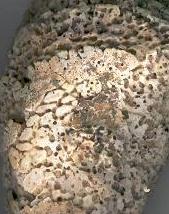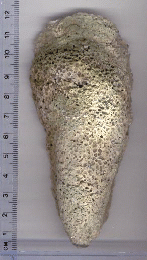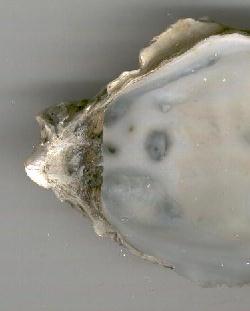Looking over the Seafood Display (and Who's
Behind It)
John McCabe
Somebody is merely selling you some seafood. You and your loved
ones, however, will be eating it. Although you are responsible
for the continued care of any fresh food from the moment you
buy it, looking over food on display at the store a bit before
you buy it, particularly seafood, is a real good idea.
Regardless of whether the seafood display
is located in a seafood store or in the seafood department of
a supermarket, it is always exciting to look at, particularly
if many different fish and shellfish types are offered. Slow
down, take your time, marvel a little at the bounty the sea provides
us - and also pay close attention to details. This is particularly
important when it comes to fish and shell stock clams, mussels,
and oysters.
Most of us know to watch for signs of the
potential beginnings of spoilage with whole fish. Their eyes
are sunken and cloudy. The gills may have an obvious gray or
green tint. The fish's flesh has lost its rigidity, has become
soft as evidenced by a finger or fingernail indentation that
stubbornly retains its form in the flesh. A smell reminiscent
of ammonia is highly undesirable. Shucked oysters in plastic
jars are also found in these refrigerated displays. They are
pretty straight forward. By law the shucked oyster jars are all
properly labeled and dated. If by some rare chance the shucked
oysters smell odd or bad once you open the jar at home, just
put the lid right back on the jar, wash your hands, put the jar
in a plastic bag, and take it back to the vendor. Oyster meats
should smell fresh, reminiscent of the ocean shore, perhaps even
a little earthy, and always pleasant. Don't worry: Your nose
will know.
Qualifying Oysters in the Shell in the
Seafood Display
Let's take a closer look at the shell stock oysters the seafood
vendor is offering.
* Gapers
Frequently the oysters in the display are presented in a big
heap. Look at this pile closely and check for so called "gapers".
Gapers are oysters whose two shell halves are not shut (i.e.
an opening is visible between the two shell halves). This is
not a problem as long as an oyster shuts down tightly once it
is handled. If it does not shut down, the oyster is very likely
already "deader than a doornail". A few dead ones in
a big pile of oysters is no big deal, as all oysters have a peculiar
way of choosing to die at their leisure - sometimes even if they
are perfectly fresh. The fish monger certainly can't "check
their pulse" day and night. However, discovering a dozen
or so dead ones in a pile of say 100 oysters or so, is a problem.
Here's why: A dozen oysters in a big pile dying overnight or
in the course of the day is no real cause for alarm. That could
conceivably happen with the freshest oysters straight from a
grower. However, the fact that that many dead oysters are still
left in the vendors seafood case at the time you are ready to
buy some, is very just cause for concern. Either the person behind
the display is to busy (or lazy) to tend to his/her seafood case,
or worse, the oysters have reached their shelf life limit and
are dying so fast that he or she can't keep up with removing
the casualties. In either case: Just stay away from all of those
oysters. In fact, it is my opinion to best stay away from anything
else the fish vendor is peddling as "fresh". Go elsewhere
for your seafood.
* Broken Shells
Don't buy oysters with damaged shells. The shell is broken when
it has a prominent crack or a hole. Any fish monger that knowingly
sells you obviously damaged oysters, clams, or mussels is definitely
in the wrong business and does not deserve your hard earned money.
Go elsewhere for your seafood.
 * Oyster Shell Cosmetics
* Oyster Shell Cosmetics
A "honeycombed" look and mud
blisters cosmetically compromise an oyster's shell and reduce
its trade value considerably in the half shell market. The former
condition can easily be recognized by just looking at the shell
outside. The latter, mud blisters, is impossible to ascertain
without opening the oyster. However, the honeycombed condition
may precipitate the existence of mud blisters. Neither of these
two factors usually affects the oyster meat itself. Although
both types of organisms can severely weaken the oysters shell
layers, they only rarely manage to kill the oyster within, as
it compensates by strengthening its innermost shell layer. Both
conditions are associated with bottom cultivation and natural
growth harvesting. They are only rarely encountered with more
sophisticated (and costly) off-bottom oyster growing techniques
(such as rack and bag and long-line). Although
honeycombed oysters are usually fine for cooking purposes, they
are undesirable where the perfect presentation of oysters on
the half shell is desired. A few more details on this topic:
 Honeycomb
Honeycomb
Sometimes, oyster shells are perforated with countless little
holes. This "honeycomb" look is caused by a multitude
of small boring sponges (among them the species Cliona lobata,
C. celata, , C. spirilla, C. truitti, and
C. vastifica). The condition tends to weaken the outer
and central shell layer of the oyster. In rare instances, the
innermost layer upon which the oyster's flesh rests, can also
be damaged. In any case, the shell is crumbly and, in severe
cases, substantial outer shell fragments may readily break off
during handling and opening (shucking). Unfortunately,
the tunnels these boring sponges create can readily host other
organisms such as mud worms.
Optional images of a severely afflicted
specimen. Although it unfortunately does not show well in my
pictures, the adductor scars on both valves are excessively recessed
and deformed. The oyster's meat, however, was entirely unaffected
and proved to taste delightful. 1. Right
valve outside 2. Right
valve inside 3. Left
valve outside 4. Left
valve inside
 Mud Blisters
Mud Blisters
Small black dots or dark channels can occasionally be present
on the inside of an oyster's shell. They are called mud blisters
and are caused by small mud worms (most notably the species Polydora
websteri). The oyster continuously
covers these imperfections naturally with layers of its shell
material. Hence they are meaningless as long as they are not
punctured with the oyster knife tip or an oyster fork, as they
may emit an unpleasant mud odor.
Hitchhikers
Oysters rarely travel alone. Given a choice it is best
to pick oysters with the least amount of animal life attached
to the shell. For instance, an oyster covered with barnacles
will taste just as good as one that is not. However, it is more
likely to start to smell spoiled after a few days in the refrigerator
as some of the barnacles likely are already dead due to damage
during transport. High and dry in the crisper drawer of the fridge,
the rest will die well before the oyster floating in seawater
inside the shell will. Although I never pass up fresh oysters
with lots of barnacles attached, I do give 'em a quick scraping
and scrubbing in a colander under running water (usually outside)
once I get the animals home to get rid of the hitchhikers.
* "Potato Vendors"
If you've visited a number of seafood vendors in your day, you
may recall the oysters in the display arranged pretty much like
a big pile of potatoes. Regrettably, many seafood vendors apparently
don't know the difference between a vegetable and a living animal.
As mentioned earlier, the most common oysters found in stores
are the Pacific oyster (in North America and Europe) and the
Eastern oyster (North America). Their shell fortress features
a rather flat shell on top and pronounced cupped or "belly
like" shell on the bottom. It can't get any more obvious.
The belly part naturally traps some sea water in which the oyster
floats. This helps keep it juicy and alive. Hence one does not
need to be a rocket scientist to figure out that an oyster sitting
"belly up" in a seafood case (or at home in the refrigerator)
is more likely to loose its "bath water" much more
readily than if it is placed "belly down". Rule
#1 when storing any oyster: Cupped portion of the shell down!
Any seafood vendor that is either too lazy or to busy to
arrange his living oysters a bit accordingly may not be deserving
of your business - particularly if the oysters are destined to
be slurped raw off the half shell. Nothing irks me more than
a bunch of "fresh" oysters I just paid for with my
hard earned cash that have a dried out look after I open them.
Without exception these "desert oysters" are immediately
served to our cats - who incidentally love 'em. Ok. I confess
that a flat tire on the way to work irks me more.
Conversely, if you find a seafood vendor that invests at least
a little time in organizing his oyster pile properly, also gets
rid of dead and broken shell oysters, mussels, and clams, stick
with him (or her). He probably also knows what he is doing with
the rest of his seafood. I believe that particularly the presentation
of oysters, clams, and mussels serves as an excellent general
indicator of the seafood merchant's quality overall. Please also
note that even the best fish monger with the most beautifully
displayed seafood in his clean case might inadvertently end up
selling you a few dried out oysters in your batch. Regardless
of his efforts in observing rule #1 after receiving them from
his supplier, the oysters may have traveled upside down and sideways
for days on end before he ever got them. It simply happens and
at least he (or she) should be commended for handling his oysters
the right way after others may have handled them wrong.
Pointer:
If you knock on the top shell of an oyster and it sounds hollow,
it frequently means that the oyster inside has lost much of its
moisture and will likely appear dried out instead of juicy upon
opening.
* The Baker's Dozen
As mentioned above, it is not that unusual to end up with a "compromised"
oyster or two (dried out or dead) after buying a dozen oysters
- even if the seafood vendor took real good care of his oysters.
That can even happen when the oysters are purchased directly
from a grower. Every oyster grower and every competent seafood
vendor knows this. I have bought oysters from many growers directly.
Most of the growers I've dealt with will customarily slip in
an extra oyster or two along with the dozen or two I've paid
for. Some seafood vendors will do the same. Rest assured that
they can all count to twelve and the free extra oyster or two
is certainly no oversight on their part. Everybody is bound to
be happy with this type of transaction. If the dozen turns out
to be perfect, then the few extras "on the house" are
all the more appreciated. I find that a very wise and considerate
gesture - one that I remember when I decide on where to buy my
next batch of seafood. Some other seafood vendors are classic
bean counters that would rather argue later about a dead or dried
up oyster than spring for an extra oyster or two at no charge
on the front end.
* Intro
* Fresh
Oyster Types
* Looking over the
Seafood Display (and Who's behind it)
* LiFo (Last in, First
out) Shopping
* How many Oysters
to Buy
* Buying Oysters
on the Internet


